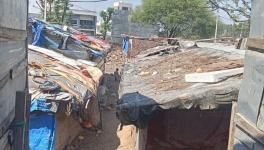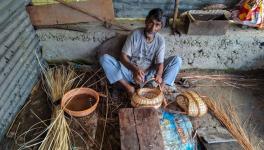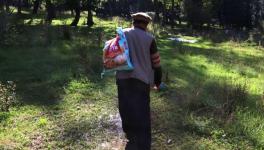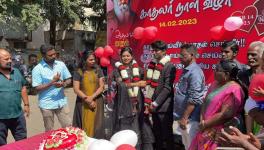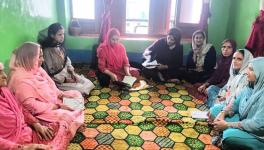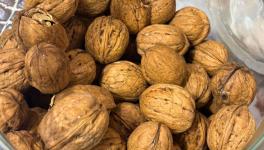J&K: Lifestyle Diseases Surge as Tribals Choose Healers Over Pills
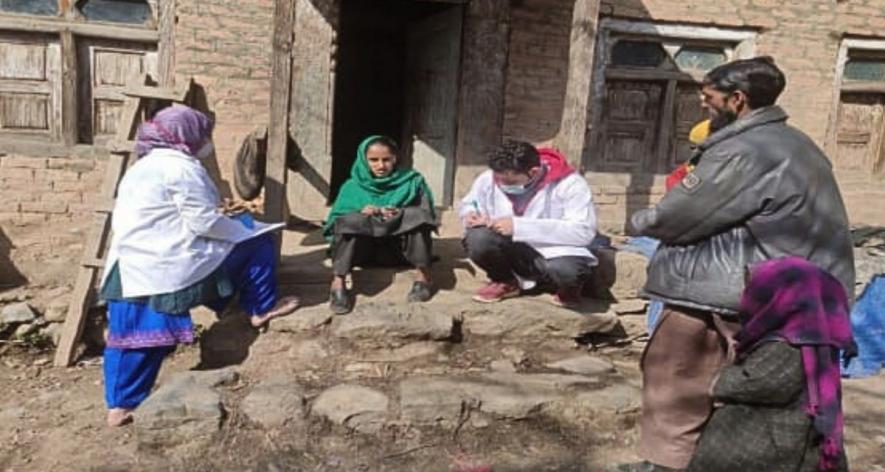
Two recent studies conducted by SKIMS among Gujjars and Bakarwals of Kashmir Valley found prevalence of thyroid disorders, hypertension, prediabetes and associated risk factors (Photos - Dr Tajali Sehar).
Srinagar, Jammu and Kashmir: Nestled in the Zabarwan hills just 20 km from the city centre, Faqeer Gujri is the most sought-after offbeat destination for Srinagar residents in summer — be it to take a bath in fresh glacial waters or savour a moment of solitude.
However, things are not so rosy for the Scheduled Tribe (ST) of Gujjars living in this idyllic place. Lifestyle diseases, including anaemia and thyroid, are prevalent here.
Razia* (17) recently gave birth to her third child. Recalling how she had fainted during her second pregnancy and was taken to a dai (local midwife), she told 101Reporters, “Usually, the dai has a readymade solution to all pregnancy-related issues. She helps in home deliveries, too. However, even the dai could not do much in my case and told us to report to the nearby local sub-centre.”
At the centre, Razia was asked to do some tests, which showed that she had anaemia and thyroid disorder. “Despite visiting the doctor, I could not communicate my problem properly. We speak gojri/pahari only and I am illiterate. I could not understand what the doctor was saying. From what my husband told me, I know I have some kamzori (anaemia) and thiride (thyroid),” she said.
Razia got free medicines from the sub-centre, but she did not take them fearing side effects. “I rely only on herbal pills and concoctions given by the faith healer. They have a cooling nature, with no side effects,” she claimed.
Her sister-in-law Shamshad* (23) shared a similar story. She also had a fainting episode and stomach pain during her first pregnancy. “My husband took me to a faith healer, who gave me some water and a medicinal paste, which was applied on my abdomen,” she recalled.
“As my condition did not improve, I was taken to the local sub-centre. However, the facility was closed since it was past the working hours [10 am to 4 pm]. The other government hospital is located far away. Travelling to that place itself costs a lot. As we could not afford it, we went home and decided to wait till morning. But the pain intensified at night and I had a miscarriage,” she said.
A labourer from the Gujjar tribe, Abdul Hamid* (55) from Gutroo village of Tral district in South Kashmir, suffers from uncontrolled blood pressure (BP) and diabetes. “Two years ago, I suddenly lost weight and began to feel extremely thirsty. I consulted a nearby dispensary and was given free medicines, which I stopped taking within a few weeks. As my health deteriorated, I travelled to Srinagar, where I was diagnosed with long-standing diabetes and high BP,” Hamid said.
Hamid’s wife suffers from gout and heart-related problems. “She complained of palpitation and searing joint pain. We consulted several faith healers assuming that she was haunted by spirits. However, when the pain intensified, we went to the main hospital in the city around four years ago,” he said.
Hamid earns Rs 12,000 per month. The eldest of his three daughters is married. “My income is already inadequate. On top of that, we have to visit the city hospital every two to three months. I spend Rs 3,000 per month on medicines alone,” he added.
Another ST community, Bakarwal faces a similar fate. Five years ago, Nayeema Begum* (40) shunned nomadic life and started living in a concrete house in Thanna Mandi village in Jammu’s Rajouri. “The diseases are the same, but city people have access to proper health care facilities unlike us. I have thyroid issue. My father has high BP and heart block. Every month, we travel to Srinagar to get his check-up done and every visit costs around Rs 15,000 to 20,000. Sirf ghadi ka kiraya hi nahi balki daira bhi dhoondna padta hai [Besides travel fare, we have to spend money on accommodation],” Nayeema said.
Data Crunching
As per the 2011 Census, the total population of Scheduled Tribes in Jammu and Kashmir is 14.9 lakh, which is 11.9% of the total population of the Union territory and 1.4% of the total tribal population in the country. Poonch, Rajouri, Anantnag, Udhampur, Kupwara, Doda and Srinagar districts have a high concentration of Gujjars and Bakarwals.
Gujjars are primarily agriculturalists. They rear cattle to earn a living and work as labourers and drivers, too. Their lifestyle has not changed much and only a small percentage has switched to urban life. Bakarwals, on the other hand, do seasonal migrations on foot. They take livestock to the upper regions of the Kashmir Himalayas in summer and return to the plains when winter sets in.
A 2020 study by Soura-based Sher-i-Kashmir Institute of Medical Sciences (SKIMS), the largest tertiary care hospital in Kashmir, estimated the prevalence of thyroid disorders, and evaluated urinary iodine concentration and thyroid autoantibody status among the Gujjars and Bakarwals of Kashmir Valley.
A total of 763 people from Anantnag, Pulwama, Ganderbal, Kupwara and Srinagar districts participated in the study, which revealed that 33% of the tribals had some form of thyroid dysfunction, including 24.1% subclinical and 6.8% overt hypothyroidism. As much as 30% had urinary iodine concentration less than 100 micrograms, which pointed to iodine deficiency.
Another SKIMS study undertaken in 2021 evaluated the prevalence of hypertension and associated risk factors by including 6,808 tribals (5,695 Gujjars and 1,113 Bakarwals) aged above 20 years. The overall prevalence of hypertension was 41.4% and pre-hypertension was 35%. Passive smoking, family history and obesity were significantly associated with the condition.
Cause and Effect
Dr Nazia Zahoor, a senior resident at Government Medical College, Srinagar, told 101Reporters that stereotypes impeded medical consultation among tribals. “They prefer home deliveries assisted by midwives. They think antenatal care would have a negative impact on their health. This mindset could be due to lack of awareness and socio-cultural and religious beliefs.”
Dr Nazia, who has researched extensively on tribal communities in Faqeer Gujri, elaborated that the community being patriarchal in nature remains stuck to its traditional norms. “Owing to poverty, illiteracy and language barrier, they prefer traditional healing over allopathic medicines.”
Deficiency of micronutrients, including zinc, iron, folate and iodine, in pregnant women causes low birth weight in babies, which in turn increases the risk of anaemia and non-communicable diseases in them as they grow up.
“Subsidised rice, maize and pulses form the staple diet of tribals. They also drink noon chai, which has high salt content. Surprisingly, they do not consume much chicken and red meat. Overall, their dietary habits are very poor,” she said.
Dr Tajali Sahar, a co-author of the mentioned studies and Scientist-B, Department of Clinical Research at the SKIMS, told 101Reporters that lifestyle diseases were not linked with a sedentary lifestyle alone. “New research has shown its connection with a variety of factors, including poor nutrition, malnutrition, smoking, tobacco consumption and junk food. While we can rule out junk food from their diet, we have tried to learn about the other factors,” she explained.
She said no dependable data were available on the prevalence of hypertension among the general population. “But we can easily say that hypertension in tribals could be on a par with the general population as the percentage of smokers — both active and passive — is high... They mostly live in poorly ventilated kutcha houses or dhokas and depend on firewood for cooking. This acts as a passive smoke among women and children at a very young age.”
Dr Sahar said pre-diabetes was a cause of worry with its prevalence between 11 and 13%. If not properly cared, it would eventually lead to fully functional diabetes.
Action plans
Although no specific data on the health status of tribals are available, the Jammu and Kashmir administration in 2021 rolled out a health plan to provide holistic healthcare facilities in tribal areas, and transit accommodation on various migratory routes.
“Under this plan, the National Health Mission (NHM) was to facilitate mobile medical units, ambulance services, treatment in hospitals, and training of tribal youth, besides helping them benefit from various schemes. Unfortunately, it had remained on paper,” a senior NHM official, wishing not to be named, told 101Reporters.
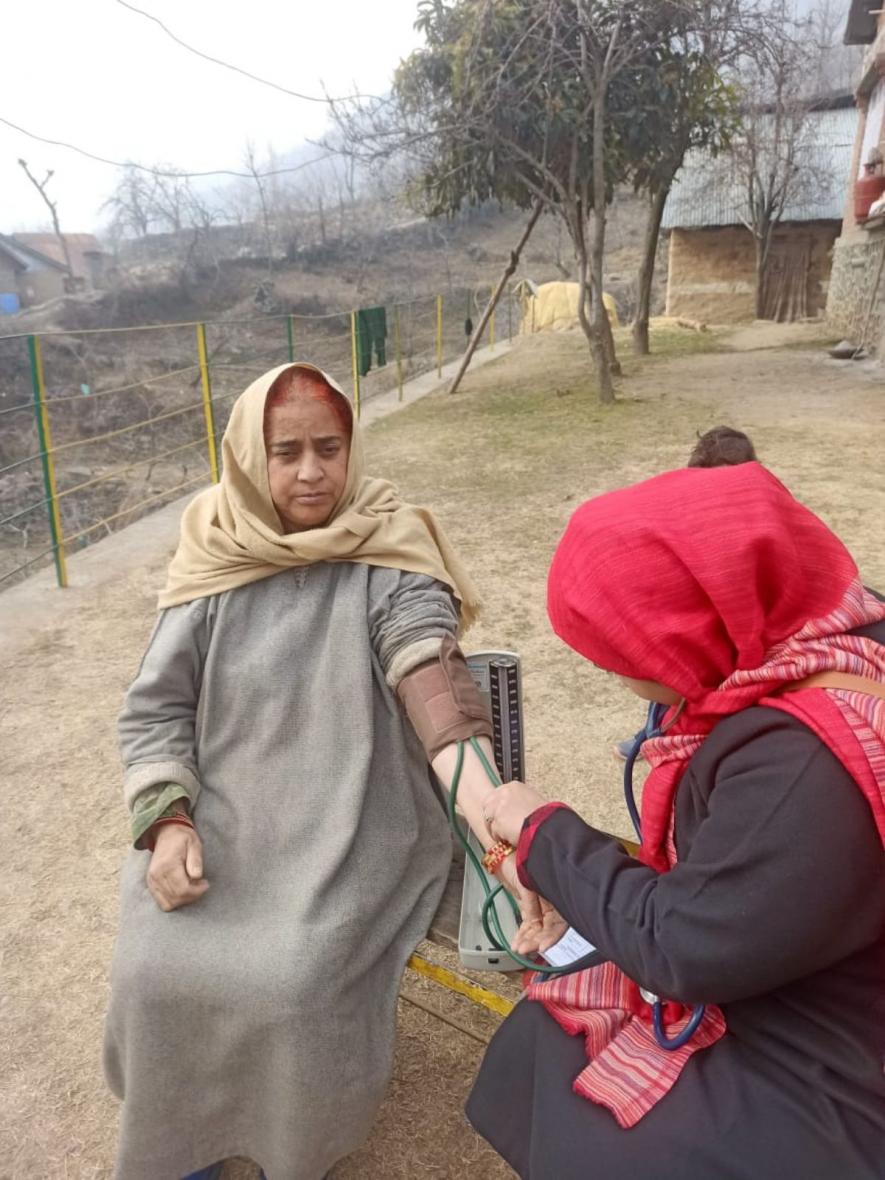
Researchers believe these lifestyle diseases were linked with a sedentary lifestyle alone but also other factors like poor nutrition, smoking, lack of testing, etc (Photo - Tajali Sehar).
On the other hand, the SKIMS Department of Endocrinology has devised an interventional plan to address the issues. “We selected Anantnag and Pulwama districts for the project, funded by the Department of Science and Technology. Preliminary studies have been done in both districts. According to the plan, if any person with hypertension comes to us, we will give free medicines through Accredited Social Health Activists (ASHAs). We will provide IDs to ASHAs to easily monitor a patient’s condition. The ASHAs will send back the data to us on a weekly basis," Dr Sahar said.
The department has prepared treatment charts for each person who is diabetic, prediabetic or has hypertension in a given area. “We did not give any medication for prediabetes, but framed pamphlets and documentaries in their local languages so that they can easily understand about the problems and what it can lead to in future," she said.
Speaking to 101Reporters, Dr Sheikh Mohammad Saleem, a public health expert working with the Ministry of Health and Family Welfare, Government of India, highlighted the need for continuous communication with the community to initiate a change in behaviour. A comprehensive tribal-sensitive healthcare system incorporating the social, cultural and linguistic issues is needed,” he said.
(Hirra Azmat is a Srinagar-based freelance journalist and a member of 101Reporters, a pan-India network of grassroots reporters)
Get the latest reports & analysis with people's perspective on Protests, movements & deep analytical videos, discussions of the current affairs in your Telegram app. Subscribe to NewsClick's Telegram channel & get Real-Time updates on stories, as they get published on our website.









